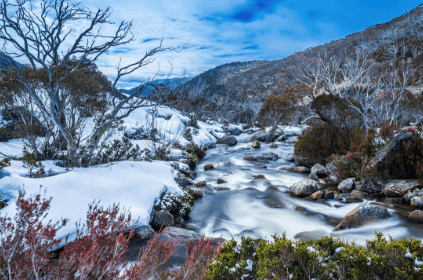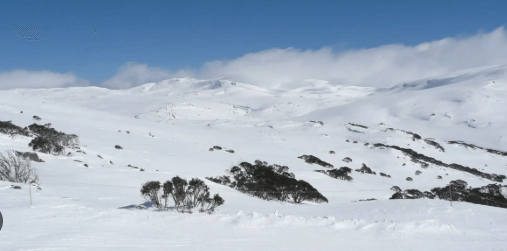Does It Snow in Australia? Alpine Snow Explained
Introduction
While Australia is world-renowned for its sunny beaches, deserts, and outback, you might be surprised to learn that snow does fall—albeit in limited regions during winter. From the alpine peaks of New South Wales and Victoria to Tasmania’s highlands, certain elevated areas regularly experience snow between May and October. Snowfall fuels a modest skiing and snow-play culture, with resorts such as Perisher, Thredbo, Mount Hotham, and Ben Lomond drawing snow lovers during the coldest months.
However, climate change is redirecting that narrative—melting seasons are shrinking, and snow coverage is declining across the alpine regions. This article unpacks where and when snow occurs in Australia, why some places still get it, how climate trends are transforming expectations, and what the future may hold for this unique winter phenomenon. Let’s dive into Australia’s surprising snowy side.
1. Where Does It Snow in Australia?
Regions & Elevation
- Australian Alps (NSW, Victoria, ACT): The primary snow-bearing region. The Snowy Mountains in NSW (including Perisher and Thredbo) and Victorian Alps (Mount Hotham, Falls Creek, Mount Buller) are where snow accumulates annually.
- Tasmania: Areas around Ben Lomond Alpine Resort and the highlands receive regular snow in winter.
- Western Australia & South Australia: Rare snow at higher elevations—e.g., Bluff Knoll in WA and Adelaide Hills in SA—with snow sometimes reported but far less frequent.
City Snowfall Examples
- Among major capitals, Canberra, Hobart, and Melbourne have historically recorded snowfall, though in cities it’s unusual.
- Regional centers like Orange and Ballarat (each >40,000 residents) see snow annually, while snow at sea-level cities remains rare.
2. When Does It Snow—Timing & Seasonality
- Snow Season: Traditionally spans June to August, but snow may begin as early as May and linger into September or October in high areas.
- Peak Months: July is generally the most reliable snow month across alpine areas.
- 2025 Outlook: Early snow appeared in the Snowy Mountains in May 2025, with ENSO and IOD patterns currently neutral—providing cautious optimism amid warmer trends.
3. Why Does It Snow There? The Science
- Elevation & Cold Air Masses: The Australian Alps (over 2,000 m at peaks like Mount Kosciuszko—2,228 m) capture cold air and precipitation, enabling snowfall.
- Climate Drivers: The Antarctic Oscillation (AAO) influences cold air incursions. ENSO and Indian Ocean Dipole also affect snowfall—El Niño tends to reduce alpine snow, while low-lying cold snaps may still benefit from cold air.

4. Climate Trends & Future Outlook
- Historical Decline: Over the past 70 years, maximum snow depth has declined by about 0.4–0.6 cm per year in the Snowy Mountains; rising temperatures (~0.2 °C per decade) and decreasing precipitation are major factors.
- Projections (to 2050): Under low emissions, snow depth at high elevations may decline 5–50%; at lower sites, the decline may be as much as 15–80 %.
- Ski Season Shortening: Some forecasts predict a reduction of up to 55 days of ski season by 2050. ANU projects ski season drops from 105 days now to 81 by 2030, then potentially just 61 or even 70 under various scenarios.
- Risks to Ecosystems & Economy: Declining snow threatens alpine species (e.g., snow gums), water availability, tourism, and community livelihood.
- Adaptation Efforts: Cloud seeding, artificial snowmaking, and diversification into year-round resort models are underway, though snowmaking is energy- and water-intensive and not a long-term solution.
5. Where to Go for Snow in Australia—Activities & Tips
- Top Resorts:
- Perisher (NSW): Largest ski area, ~60 snow-days annually, median snowfall ~190 cm.
- Thredbo, Charlotte Pass, Selwyn (NSW): Popular ski and beginner zones.
- Victoria: Mount Hotham (66 snow-days/year), Mount Buller, Falls Creek, Dinner Plain for cross-country.
- Tasmania: Ben Lomond area provides alternative alpine snow access.
- Perisher (NSW): Largest ski area, ~60 snow-days annually, median snowfall ~190 cm.
- Highlights:
6. LSI Keywords Integrated
“Australian snow season,” “snowfall in the Snowy Mountains,” “ski resorts Australia,” “alpine snowfall Australia,” “climate change snow decline,” “snow days Australia,” “when does it snow in Australia,” “mountain snow Australia.”
Conclusion
Yes, it does snow in Australia—but only in specific, elevated regions across the south-eastern alpine zones and Tasmania. The Snowy Mountains, Victorian Alps, and Tasmania’s highlands reliably accumulate snow each winter, fueling a modest yet vibrant ski and snow-play culture. While gentle snowfall may dust regional towns or fringe areas occasionally, major cities rarely see persistent snow. However, the future of Australia’s winter wonderland is fragile.
Decades of warming and reduced precipitation have already shortened snow seasons and shrunk snow depths. Projections suggest ski seasons may diminish by over a month by 2050, impacting alpine ecosystems, tourism, and community livelihoods. Solutions like snowmaking and eco-adaptation offer temporary relief, but sustainable change hinges on worldwide efforts to curb greenhouse emissions. Snow in Australia remains magical—but preserving its snowy magic for future generations demands immediate climate action.
Read also: Heel Pain & Cancer Risk: What to Know
FAQs – People Also Ask
- Does it snow in Australia every year?
Yes, in alpine areas like the Snowy Mountains, Victorian Alps, and Tasmania’s high country, snowfall occurs annually, though amount and consistency vary by year. - Which Australian cities receive snow?
Snowfall in capital cities is rare; Canberra, Hobart, and Melbourne have recorded snow, but significant accumulation is uncommon outside elevated nearby areas. - When is the snow season in Australia?
Typically between June and August, with peak conditions in July. In high alpine zones, snow can begin in May and linger into September or October. - Are ski seasons shrinking in Australia?
Yes—mountain records show declining snow depths and shorter seasons. Some estimates predict ski seasons may drop by 40–55 days by mid-century under warming scenarios. - Can artificial snow save Australia’s ski resorts?
Artificial snow helps extend season lengths, but it is costly in water and energy, and relies on suitable cold conditions—making it an unsustainable long-term fix.






